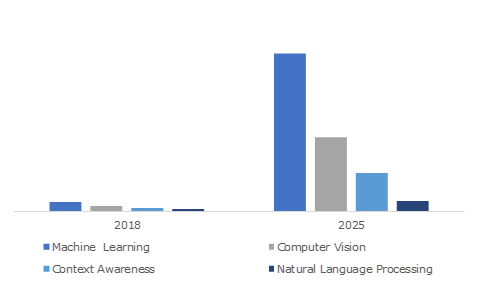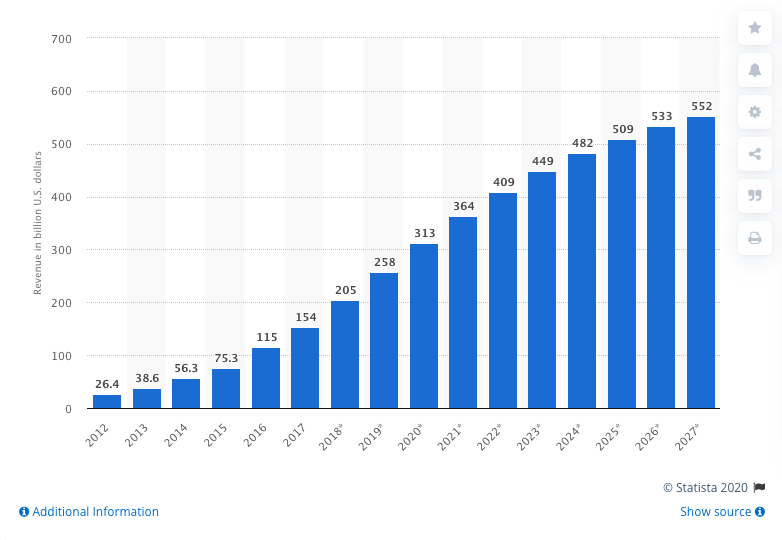Is it the future? Or just a lot of hot air? Artificial Intelligence has captivated us for some time now and is finally showing clear signs of development in the 21st Century that builds on decades of promise.
The very definition of AI is a dynamic one and has been studied as a recognised academic discipline since the 1950s. In a nutshell, AI refers to machine-based intelligence. This ‘intelligence’ can vary wildly, from the chess computers of the mid 20th Century designed to compete with humans, all the way to the driverless cars that look set to become a reality in the coming years.
We identify AI as robots that we can communicate on an almost personal level, that’s seamlessly capable of tapping into and interpreting wealths of data in seconds, but are we finally in a position to start backing the technology properly? Or are we looking at a development that’s not yet ready to deliver on its promise?
If you are already an investor but have some reservations about fully buying into AI then the bad news is that you’ve probably already owned shares from organisations embracing the technology.
Many companies are wholly dependant on the development of AI to help optimise their performance over the coming decade, and the progress of Artificial Intelligence will undoubtedly affect the stock prices of countless public companies in operation today.
Does this mean that now’s the time to take the plunge and look to buy into the Artificial Intelligence hype? Let’s explore some of the key talking points surrounding AI-based investments as we move into a new decade of advancements:
Buying into the boom

(Image: Global Market Insights)
The chart above illustrates the huge growth that’s expected to occur in emerging AI-driven industries in the near future. In fact, The Motley Fool reports that the AI market as a whole is expected to grow to a total value of $15.7 trillion by 2030.
What do these upbeat predictions mean for investors? Well, forecasters believe that AI will make an array of companies wholly more efficient, which will, in turn, enable them to produce new products and services that have the potential to influence an unfathomable number of sectors across healthcare, automotive industries, financial services, communications, manufacturing and retail.
With AI comes a higher level of automation, meaning that a lot of the aforementioned expansions will come with cost-reducing side effects and potentially huge revenue streams from sales.
Modernisation has often been greeted with trepidation among businesses eager to protect their margins from the unknown, but we’re already being treated to tastes of the efficiency of AI in everyday life, from interactions with chatbots to the quick analysis of unfathomable patient metrics in the world of healthcare. The costs of paying out for manual labour would mitigate the expenses associated with AI adoption and uptake will be relatively quick as the technology continues to develop.
Understandably, the spectre at the feast is the prospect of job losses for manual workers, but with a rapidly growing industry comes vast job opportunities. According to Gartner, the arrival of AI will lead to the elimination of 1.8 million jobs, but in doing so will create a further 2.3 million.
This high rate of adoption, coupled with the promise of more jobs, will lead to a boom in the AI market during the early-to-mid 2020s – while a total value of $15.7 trillion may seem exceptionally steep, it’s a clear indicator of the level of disruption that industries are braced for.
Anticipating the rise of the chipmakers
Looking at tangible investments, it’s hard to look beyond the potential offered up by the world’s AI chipmakers and the semiconductor industry. As AI continues to take hold, the AI chip market is forecast to attain a market value of over $91 billion by 2025.
Specifically, NVIDIA could become one of the hottest market properties during this period of growth. The leading producer of graphics processing units is having its products adopted by an increasing number of tech businesses in a bid to boost the power of their respective servers and their ability to process images and speech recognition at a faster rate.
Elsewhere, the investment-rich pharmaceutical industry is conducting more research into the adoption of NVIDIA computing power as a means of helping to identify more treatments and cures to illnesses, and the chipmaker even has a significant stake in the world of autonomous vehicles. As a result, NVIDIA management believes that the total addressable market available to them could top $50 billion by 2023.
Clarity in the cloud

(Chart showing the forecasted growth of world public cloud computing revenue over the coming years. Image: Statista)
The Cloud has reached all of us in some form or another and shows no signs of slowing its momentum. Cloud-based computing is almost wholly dependant on AI solutions and retail juggernauts, Amazon is a keen adopter of the technology. With over 32% of the cloud-computing market currently occupied by Amazon, the company has been quick to capitalise on the Cloud’s potential for use in a range of products and company processes.
One example of Amazon’s strong position within the cloud-computing market can be found in its speech recognition and text translation platform within Amazon Web Services. While this may seem like a minute detail to focus on when covering the viability of AI investments, given the sustained rise of the Cloud, there are significant benefits that can be found in backing the leading adopters of the technology to continue building on their industry advantage.
The benefits of Amazon’s adoption of cloud computing extend beyond Amazon’s Web Services. The company is looking to embed AI into many aspects of its business, with machine learning also weighing in to power the company’s fraud detection platform along with delivering personalised content.
Today, Amazon is a key player in US-based eCommerce, and still powers around 50% of all sales that occur domestically. Amazon’s adoption of AI is a clear indicator that the market is going nowhere, and is showing very few signs of losing its momentum.
Looking to the future
Artificial Intelligence is here, and it won’t be disappearing any time soon. With so many major industries looking to buy into the potential offered up by AI, the future’s clearly bright. But this doesn’t necessarily mean that investing will be straightforward.
Many projections for future market growth are dependant on variables and innovations that haven’t yet occurred. With so many problems arising from the implementation of the driverless cars that promised to take 2018 by storm, there are very few signs of this particular AI application announcing itself on the world stage any time soon.
The rise and fall of the driverless car is a cautionary tale for AI investors and speculators. The hype surrounding technology can sometimes lead to too much expectation. Be sure to exercise some levels of caution before immersing yourself into market forecasts.
That said, there are too many key players in the Artificial Intelligence market and too many applications of the technology already in use for it to be ignored as a viable investment option.
In the coming months and years, we will see a gold rush as AI startups look to deliver the kind of innovations that established businesses crave. Keep a keen eye on the markets and look for key performers. Artificial Intelligence is going nowhere, and the coming decade will see it begin to deliver on its potential.








